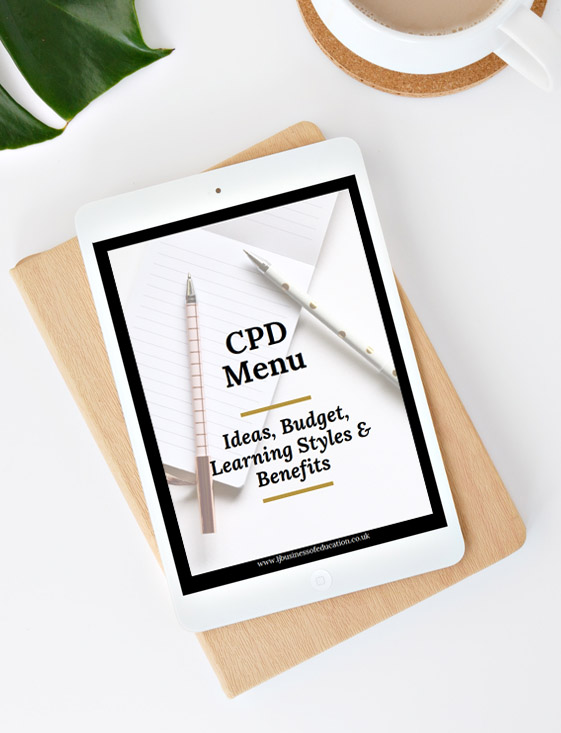In the current financial climate, it’s becoming increasingly difficult to find ways to both create efficiencies and deliver a quality education provision.
Budgets are being slashed and along with it, our capability to provide the number and quality of staff we need to deliver in the classroom. Add to that the teacher recruitment crisis and we have a perfect storm of staffing misery.
Without a doubt, our greatest resource (and cost) is our people. Think for a moment about what they want from their job, what they want from us and perhaps why other people might want to come and work for us; especially in the current context of financial pressure and high stakes accountability.
Essentially, they want what we all want in a job; reward & recognition, development, career progression, support, fair treatment, flexibility, autonomy and work/life balance. One of the key budget lines that enables some of these employee engagement drivers is CPD.
Staff training is essential to school improvement, reducing turnover and increasing retention. With unskilled staff, poor performance and high turnover, it does not take long for a school to slide into special measures.
I know when you’re looking at your budget that CPD might appear to be a ‘luxury’ you can’t afford but it really doesn’t have to be that way. In the world of education, it’s easy to boil CPD down into qualifications and conferences; expensive, time consuming and not always the best value in terms of on-the-ground impact.
Whilst both qualifications and conferences can have some great benefits it’s unlikely that, on their own, they’ll provide your staff with all that they need to continuously develop. Thinking more widely about training and development opportunities can help you to get laser focused on improvement objectives (for both your staff and your school) and help you keep your training budget under control.
Factoring in learning and delivery styles, desired impact and ways in which the learning can be disseminated more widely across your organisation can also help you to make better decisions about what type of training to offer your staff. By thinking about CPD a little more creatively, we can identify training opportunities that deliver high impact at low cost.
Let’s look at some examples in more detail:
Mentoring and Coaching
Deploying some of your more experienced staff or linking up with a partner school can create coaching and mentoring opportunities with low to zero cost. Consider using your network to source some one-to-one coaching and/or mentoring for key school leaders such as Heads of Department and SLT. This type of CPD can reap huge benefits both in terms of development and support for staff that are struggling.
Workshops to develop specific skills i.e. public speaking, report writing, interpreting financial data etc.
Not every CPD need requires a full-day conference or qualification to acquire knowledge or develop a skillset. Breakfast sessions or lunchtime workshops providing in-depth training on a specific topic can be just as effective. Again, if you have expertise within your network, you can share this knowledge more widely and potentially at low cost.
Online Training
Many CPD providers offer online webinars digging into key training areas such as safeguarding, assessment, data, management, HR, finance etc. Some providers even deliver these flexibly. This will avoid creating cover issues within school and also, potentially be lower in cost than similar face-to-face options.
Local Networks
Working with local schools, groups of staff (Heads of Department, SLT, SBLs) etc. can also create valuable CPD and research opportunities. Accessing the knowledge of others means that you don’t have to reinvent the wheel and also, have support available for staff who need it.
Secondments & Work Shadowing
Either shadowing someone internally or working on secondment at another school (perhaps as a part of an exchange) can offer a fresh perspective, on-the-job training and a potential route for succession planning. These opportunities allow staff to both acquire the knowledge that they need and build the capacity of the organisation.
Individually Driven CPD
Some people’s learning styles just don’t lend themselves to classroom based/teacher led learning. If your school can find a way to guide, record, measure and assess the impact of individual CPD activity then this can really work in your favour. Participating on social media, reading books, listening to podcasts, subscribing to relevant organisations and/or becoming members of professional bodies can also create impact at relatively low cost.
When it comes to identifying the CPD activities that will be most effective for each member of staff, the key is to really get to grips with your staff as individuals and what role each plays in the success of your organisation. You can do this by aligning your CPD plans more explicitly to your appraisal process and succession planning strategy. Doing this can provide you with a strong and cohesive staff and school development plan.
Consider dividing your CPD strategy into three strands:
- CPD for those who are experiencing difficulty or need to brush up/keep up
- CPD to acquire new skills or further enhance existing skills in the roles people currently do
- CPD for skills that need acquiring in preparation for the roles people aspire to or are planning to undertake in the future
Categorising and tailoring your CPD will not only make staff feel valued and costs more manageable, it will help deliver robust school improvement.
In addition to the above, I have put together a ‘CPD Menu’ for you with 25 CPD activities with guidance on budget, learning styles and benefits to help you design a bespoke CPD strategy.
Like what you’ve read? Subscribe to this blog by clicking here.
P.S. Have you joined The Business of School Leadership Facebook Group yet? For practical support, advice, tips, tools & guidance about all things school leadership, join us in the community by clicking here.
Written for: Teach Secondary Magazine (@teachsecondary)











